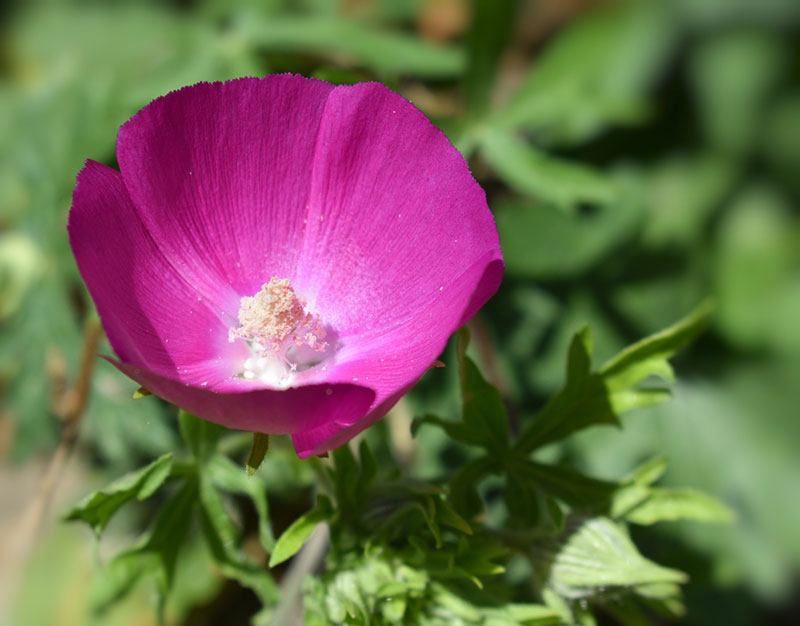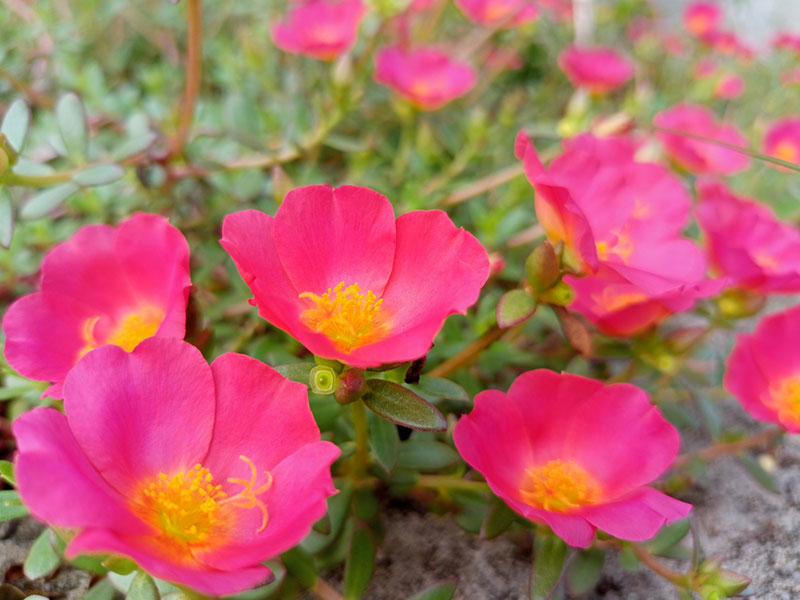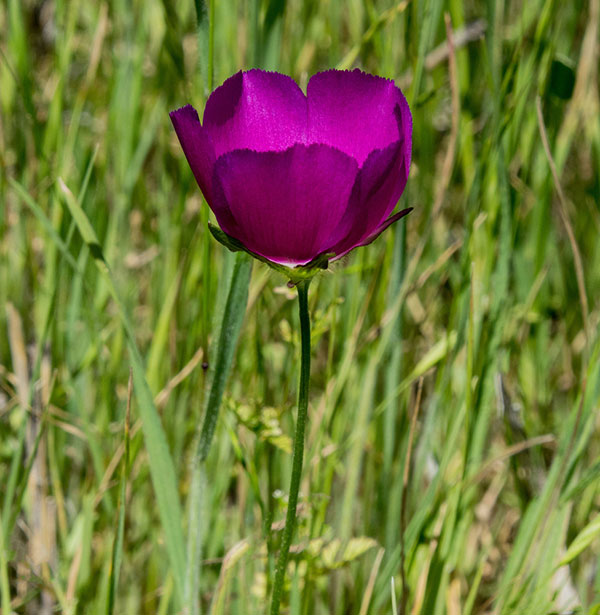
Also commonly referred to as “wine cup plant,” Poppy Mallow (callirhoe involucrata) is native to Northern Mexico and parts of the U.S. with bright sunlight on a regular basis.
Reaching up to eight inches high with a spreading habit, Poppy Mallow is a versatile plant that can clamber up garden walls and fences, cascade from hanging baskets, or serve as a colorful groundcover at the front of the border or on hillsides and slopes.
Poppy Mallow is also at home in the rock garden. With no known toxins, it’s an appropriate landscaping choice for households with children and/or pets.
Poppy Mallow grows best in USDA zones 4-8, although it can be grown as an annual in cooler climates. Here’s what you need to know about growing Poppy Mallow in your yard:
Planting Poppy Mallow
Poppy Mallow can be planted in either early spring or fall from either nursery-grown starts or by sowing seeds, although fall planting is recommended so the plants have time to develop root systems before spring.
Choose a sunny spot where reliable summer color is desirable, and keep in mind that heat-loving Poppy Mallow keeps right on blooming through the hottest part of summer when many other flowering plants languish and fade.
In very poor soils, work in a small amount of organic compost or peat moss prior to planting.
Light and Temperature
Although in most landscapes, Poppy Mallow does best when it gets full sun, light afternoon shade is recommended in environments where summers are hot.
When plants don’t get enough light, however, the foliage may become pale and flower production will wane.

Water, Soil, and Fertilizer
Amend heavy soils with sand for added drainage before planting Poppy Mallow — otherwise, this plant isn’t fussy about soil, and like most rock garden favorites, even thrives in all but the poorest soils.
Topdressing with a 5-10-5 fertilizer is recommended to boost plant growth in early spring, but other than that, Poppy Mallow doesn’t require added nutrition.
Poppy Mallow is drought tolerant, but regular watering should be provided during the first year so that their root systems can be properly established. Avoid providing too much water during single waterings — it’s best to water sparingly but regularly to keep the soil at a consistent moisture level.
Poppy Mallow develops a long taproot as it matures, so deep watering on an infrequent basis is recommended once the plants reach their second year.
Caring for Poppy Mallow
Poppy Mallow needs to be pruned back in order to keep it looking its best. Trim off old material on an as-needed basis, and deadhead flowers to ensure a longer bloom season. Foliage will die back to the crown in late fall, so apply a layer of organic mulch to minimize damage to roots during winter.

Pests and Pathogens
Poppy Mallow is fairly resistant to common pests, and deer and rabbits generally don’t bother it. Bees and other pollinators, including the Gray Hairstreak butterfly, are drawn to Poppy Mallow, so avoid using pesticides on this plant in order to help keep pollinator populations healthy.
Avoid planting Poppy Mallow in low-lying areas where or dips in the yard where runoff from rainfall might pool.
Overly wet soils and humid conditions may cause fungal pathogens to establish colonies in its foliage, so make sure Poppy Mallow is planted in areas with good drainage and that the plants aren’t overly crowded.
It may be necessary to apply a topical fungicide to keep fungal pathogens under control.
Propagating Poppy Mallow
Poppy Mallow can be easily propagated from vegetative cuttings simply by placing the cutting in water or in damp sand with a small amount of rooting hormone on the bottom tip.
It also grows easily from seed, but because the seeds are very hard, they should be abraded by rubbing them for a few seconds with sandpaper.
The seed wall can also be softened by soaking seeds in water for several days. Cuttings should be taken in early spring from new growth, and seeds should be covered by a half-inch of soil.




